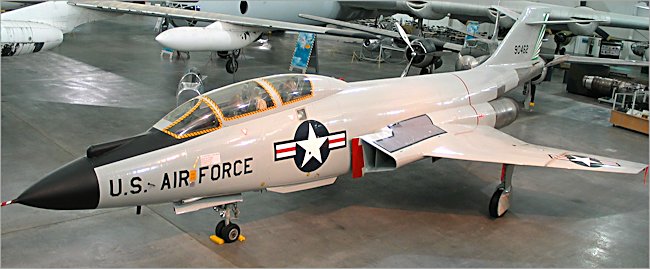McDonnell F-101 Voodoo
In World War II the long range bombers over Germany and Japan needed fighter escort. This role was carried out by the North American P-51 Mustang. The supersonic McDonnell F-101 Voodoo twin-engined fighter was originally designed as a modern version of the long range penetration escort fighter to accompany the bombers of the Strategic Air Command. During the Cold war their job was to accompany bomber on their mission of nuclear strike against the Soviet Union. Thankfully the Voodoo never took part in that mission.
The McDonnell F-101 Voodoo was the first fighter capable of exceeding 1000 mph in level flight. Later on it was mainly used as a long-range interceptor, a tactical reconnaissance aircraft and as a nuclear strike aircraft. Its career was relatively brief as a fighter but the reconnaissance variant had a slightly longer life. The Voodoo RF-101 reconnaissance variant was used in the famous Cuban Missile crisis.

The reconnaissance version was the only type that ever saw combat, flying over North Vietnam. It had a serious flaw in that the Voodoo had a tendency to pitch up into a nose-high attitude without warning because of a problem which was caused by the way in which air flowed over its wings and under its high tail. An active inhibitor was installed to address this problem
The pilot was given an ejector seat. Airbrakes and a parachute were fitted in order to allow the plane to land on shorter runways. The McDonnell F101 Voodoo was able to refuel in midair. It was armed with four 20-mm cannon as well as air-to-air missiles and air to ground rockets. It also had a LABS (Low-Altitude Bombing System) for the delivery of nuclear bombs.

The F-101 Voodoos began leaving the USAF list of active service aircraft in 1965-66, when 27 of them were transferred to the Air National Guard. The last reconnaissance Voodoos were withdrawn from service in 1979. It was replaced by the F-4 Phantom II in the fighter role.